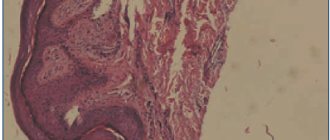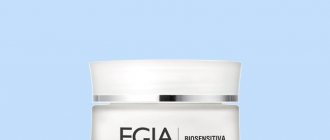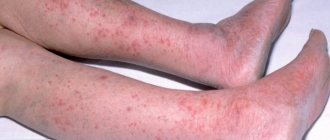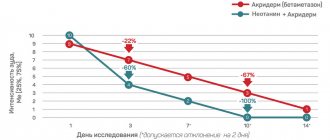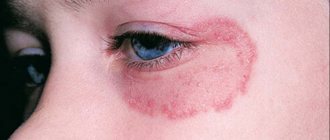Ringworm is a common skin pathology and has several forms that differ in symptoms and treatment methods. To determine appropriate therapy, it is necessary to conduct an examination and take tests. Iodine, which upon contact with the skin causes a change in color of the affected areas, will help confirm the suspicion of the presence of the disease at home. And as a remedy, this medicine has long been used in the fight against skin defects. Iodine should be used with caution for lichen, since the solution affects each type of dermatosis differently.
Types of lichen
Infectious dermatosis usually affects the skin when the causative agent of this disease, a fungus or virus, penetrates the epidermis. The main source of infection is pets or other sick animals with which humans come into contact. You can also become infected from a person.
Depending on the appearance of the affected area of skin and the symptoms accompanying this condition, several types of the disease are distinguished. Fungal diseases include:
- Pityriasis form. The fungus affects the upper layer of the skin; light, scaly lesions of various types appear, which do not cause much discomfort.
- Cutting shape. The main cause of infection is violation of hygiene rules after contact with the source of infection. It appears on the skin, nails, neck, palms in the form of light plaques with clear contours, accompanied by itching and hair breaking.
Herpes zoster (herpes zoster) is of a viral nature and is located in the area of a large nerve. After treatment, pigment spots remain at the site of the rash.
The reasons why lichen planus and lichen rosea develop are not well understood. Possible prerequisites for the disease are herpes infection, reduced immunity, vitamin deficiency in the body, hormonal imbalance, severe emotional stress, and a cold.
Signs of lichen ruber: itchy bright red rashes of various irregular shapes, peeling, destruction of the nail plate. Pityriasis rosea affects large areas, the spots are located on the back, chest, and thighs.
4. Treatment of pityriasis versicolor
Treatment of pityriasis versicolor should be carried out in a course. Unsystematic measures only reduce the likelihood of a complete cure. Antimycotics, salicylic alcohol, products with selenium sulfide, and imidazole derivatives have an effective effect on the fungus
rumicosis and terbizil
tablets are prescribed The course of continuous treatment must be
at least 14 days.
In addition to external influences on the fungus - ointments, lotions and sprays - the effectiveness of treatment can increase significantly if the patient himself takes a number of measures:
- exposure to ultraviolet light on the skin;
- wet cleaning and disinfection of living space;
- washing clothes at 90-95 degrees;
- ironing towels and bed linen;
- replacing the washcloth with a new one, updating detergents;
- wearing underwear only made from natural fabrics;
- proper nutrition, adequate sleep, immunostimulating procedures.
During the treatment period and for further prevention of relapse of the disease, folk remedies
, aimed at reducing sweating, cleansing the skin of excess fat, antiseptic measures. Skin fungus does not do well in an acidic environment, so lotions with vinegar, lemon juice and sour berries are suitable.
How to identify lichen in humans using iodine
If you find suspicious rashes on your body, you can conduct preliminary tests using iodine at home. Let's look at how to test lichen with iodine, because this procedure allows you to identify the pityriasis type of dermatosis, distinguish it from other skin diseases, does not require special tools, and takes little time.
This is exactly what lichen looks like if you smear it with iodine. Read more below.
Diagnosis of the disease using iodine (Balzer test) includes the following steps:
- Prepare the skin for testing with iodine: wash the affected areas well, gently wipe the skin with a soft cloth, avoiding strong impact, so as not to injure it. Wait until completely dry.
- Use a cotton swab to apply a 5% iodine solution to the rash.
- Wait until the iodine is completely absorbed (about 5 minutes).
- Carefully examine the results obtained and determine the reaction.
The color of healthy areas of the skin is golden, even in color, the affected areas will acquire a more saturated pigment - iodine spots become dark brown with black borders.
Using iodine tests, you can quickly recognize lichen in a child, take the necessary measures for timely treatment, and prevent the spread of the rash.
The Balzer test is highly effective in identifying the pityriasis form of the disease. The test cannot detect pink, red, ringworm or shingles.
Iodine tests are only one of the diagnostic methods. In addition to them, it is necessary to undergo an examination under a Wood's lamp with fluorescent radiation and undergo tests to determine the causes of such symptoms.
There are no contraindications for the procedure; it can be used at any age, during pregnancy and breastfeeding.
Tinea versicolor
Lichen versicolor (synonyms: pityriasis versicolor, skin malasseziasis) is a common disease that was first described in 1853 by Robin.
It is believed that up to 10% of the population is affected.
Tinea versicolor is more common in countries with hot climates and high humidity. In mid-latitudes, most cases of the disease occur in the summer.
Young and older people, regardless of gender, are more often affected. The peak incidence occurs at age 20. The disease is rare in children, especially under 7 years of age, and elderly people.
Lichen versicolor has a chronic course and is marked by frequent relapses. Its contagiousness is insignificant.
The causative agent of the disease , a yeast-like fungus Pityrosporum orbiculare or Malassezia furfur, lives in the scales of the stratum corneum of the epidermis.
Infection occurs through close contact with a sick person or wearing someone else's clothing.
Increased sweating, changes in the composition of sweat, sebum, seborrhea, hormonal imbalance (pregnancy, diabetes mellitus, Cushing's syndrome), severe somatic diseases (tuberculosis, cancer), and poor hygienic conditions predispose to the development of lichen versicolor.
The incubation period ranges from 2 to 8 weeks.
On the skin of the neck, shoulders, chest, abdomen, axillary fossae, lateral surfaces of the torso, less often the thighs and scalp, yellowish-brownish-pink spots appear, increasing in size, merging with each other, they occupy significant areas of the skin. Gradually the color of the spots becomes darkish brown. Sometimes they take on a café au lait color. This change in color shades served as the basis for the name of the disease (lichen versicolor). The spots do not protrude above the skin level; when merging, they form foci of different sizes with clear boundaries and scalloped edges; they usually do not bother anyone subjectively (sometimes there is slight itching); they are accompanied by bulbous peeling (hence another name - pityriasis versicolor), easily visible when scraped.
After exposure to ultraviolet rays (usually after sunbathing), the fungal colonies die and slough off, leaving behind white spots.
The diagnosis of lichen versicolor in most cases does not cause any difficulties and is established on the basis of a characteristic clinical picture.
If it is difficult to diagnose, the dermatovenerologist resorts to additional research methods:
- Balzer iodine test;
- microscopic examination (detection of fungal elements in the scale);
- examination under a Wood's fluorescent lamp, and also conducts differential diagnosis with other skin diseases.
Prevention of versicolor versicolor includes measures aimed at eliminating sweating and treating pathologies of internal organs.
It is advisable to examine all members of the patient’s family or those in close household contact.
Disinfection of underwear, bed linen and clothing is mandatory.
And if prevention of multicolored lichen is the patient’s task, then treatment is the doctor’s duty.
Dermatovenerologist
(manager) outpatient
dermatovenerological department No. 1
healthcare institutions
"City clinical skin-
Venereal Disease Dispensary" M.S. Nekrasova
Is it possible to treat ringworm with iodine?
Iodine therapy does not help against all types of lichen; it can be used for certain types. If, after applying iodine solution to the lesions, there are no unpleasant sensations or worsening of the condition, treatment can be continued.
Antiseptic treatment of pityriasis rosea will lead to dry skin, irritation and increased inflammation of the affected areas. Such a procedure will not only not relieve unpleasant symptoms, but will also significantly complicate the situation with the possible formation of eczema.
Lichen ruber (flat) affects not only human skin, but also the mucous membranes of the mouth, lips, cheeks, and genitals. Due to the large number of causes that cause this disease, there is no effective treatment for it. Along with medications, treatment of lichen with iodine is used: it can be used to treat spots 2-4 times a day. For some patients, this procedure brings relief, for others it is completely useless.
Pityriasis versicolor (colored, solar) is distinguished by rashes of various colors - from light to dark brown spots. Considering the fungal nature of this disease, iodine for lichen cannot be used as an independent method. It is used as an additional remedy in complex treatment along with antifungal drugs.
It is recommended to treat ringworm at an early stage, at the first rashes, before they cover the hairy areas of the body. To stop its spread, the lesions can be cauterized with an iodine solution. If treatment is started on time, symptoms will disappear within a few days without the use of medication.
Many dermatologists allow the use of iodine for lichen in humans after confirmation of the diagnosis for the treatment of affected surfaces.
Methods of use in treatment
There are several ways to treat lichen with iodine:
- Problem areas are washed with soap to soften and remove the flaky layer. After this, the layer must be removed and the area cauterized with iodine. Apply a thin layer so as not to burn the skin. Carry out the procedure once every 5 days.
- Alternating iodine and brilliant green is effective. For 10 days, one day the inflamed area is lubricated with iodine, the second day with brilliant green. Alternate procedures for 10 days.
- Quick treatment for lichen is carried out with a 10% iodine solution and green soap. For the first 3-4 days, wash the areas with green soap and remove the scales. The wounds that appear are treated with iodine. After 5 days, the course of therapy can be repeated.
- An unusual recipe with paper resin. Roll up the paper, put it in a glass and set fire to the top. When the paper burns, remove the ashes and collect yellow dust from the bottom, which will become resin. The main thing is not to get burned. Lubricate the affected area with iodine and add resin.
When performing iodine therapy, doctors recommend not to be nervous, since emotional shocks reduce immunity, which will slow down the positive result. It is advisable to stay out of the sun as little as possible. It is prohibited to use other people's things and hygiene items, or to transfer your things to others for use. At first, you will have to disinfect things daily and change bed linen.
Precautionary measures
When treating the disease with an antiseptic solution, care must be taken. Uncontrolled use will cause harm - cause tissue burns and complicate recovery. In case of individual intolerance to the drug, a possible skin reaction to such treatment may be iodine allergy.
Rules for using antiseptics:
- The drug can be used by patients suffering from thyroid diseases only after consultation with a doctor;
- before starting treatment, it is necessary to carry out allergy tests for iodine;
- if there are no visible improvements after two days of self-treatment, it is better to stop it and seek advice from a dermatologist;
- An adult can apply iodine to lichen no more than 4 times a day; for a child, twice a day is enough;
- do not use the solution if there are lesions or open wounds on the skin;
- Apply the product with a cotton swab, lightly touching the affected area.
Treatment will be more effective if it is carried out in a comprehensive manner - along with iodine, take medications against fungal infections. It is not recommended to treat skin diseases on your own. The treatment regimen is prescribed by the doctor after identifying the causes of the lesion.
Causes of development and symptoms of the disease
Ringworm is a group of skin diseases characterized by colored rashes and peeling. There are 6 known types of lichen diseases, but not all are contagious. This fact depends on the pathogen. The fact is that some species develop due to a fungal infection, while others develop due to a viral infection. For example, ringworm can be caught from infected animals, and scaly disease appears due to decreased immunity after emotional shock. The types of lichen and their causes of development are shown in the table below:
| View | Contagiousness | Pathogen/cause |
| Shearer | Contagious | The causative agent is the fungus trichophytosis - develops on the human body or microsporia - develops on the body of animals. |
| girdling | Contagious to those who have not had chickenpox | It develops due to the herpes virus entering the body. |
| Pityriasis | Contagious | Appears with the development of a yeast-like fungus, which is activated when immunity decreases. |
| Pink | Not contagious | The exact causative agent is unknown; scientists believe it is a virus. |
| Scaly | An autoimmune reaction of the body to its own epidermal cells. | |
| Red | Skin reaction to an irritant: virus, bacteria, chemicals. |
Not only test results, but also symptoms will help to distinguish one type of lichen from another. Despite the fact that the diseases differ in some features, they can be recognized using common signs:
- rashes on the body in specific areas, characterized by clear edges;
- rashes vary in color (from pale pink to bright red);
- the affected lesions itch, peel and crack.


